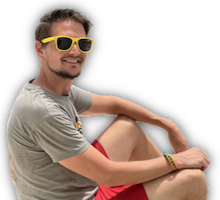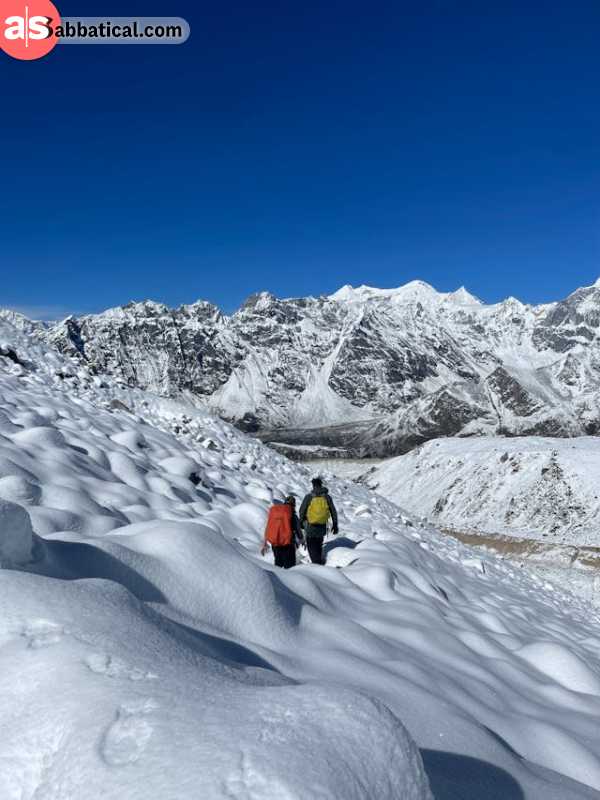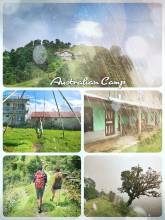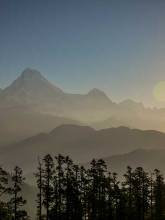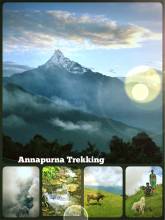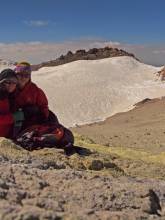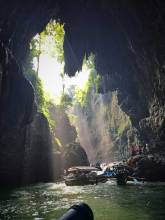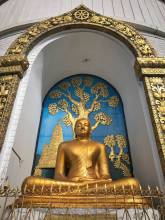Trekking the Legends: Kanchenjunga, Manaslu & Poon Hill
Nepal is a place where mountains call people. Big snow peaks and green valleys mix with culture and kind people. Trekking here is not just walking; it's a heart journey. In this article, we talk about three legendary treks. One is the Manaslu Circuit Trek, where wild and raw beauty meet. Then there's the Kanchenjunga Circuit Trek, long and remote but full of soul. And the last, short and sweet one, Ghorepani Poon Hill Trek, where sunrise is gold. Every trek is different, but all make you feel something deep. All visitors who come never forget. Let’s go deep into these treks now, with simple words and a full guide.
is a place where mountains call people. Big snow peaks and green valleys mix with culture and kind people. Trekking here is not just walking; it's a heart journey. In this article, we talk about three legendary treks. One is the Manaslu Circuit Trek, where wild and raw beauty meet. Then there's the Kanchenjunga Circuit Trek, long and remote but full of soul. And the last, short and sweet one, Ghorepani Poon Hill Trek, where sunrise is gold. Every trek is different, but all make you feel something deep. All visitors who come never forget. Let’s go deep into these treks now, with simple words and a full guide.
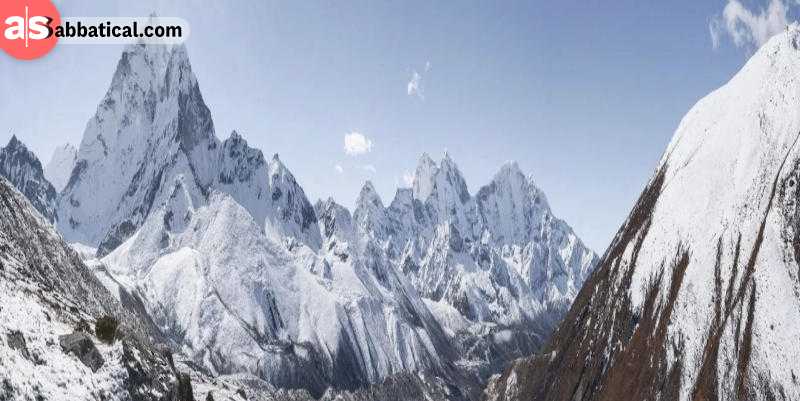
Manaslu Circuit Trek
Introduction of Manaslu Trek
The Manaslu circuit trek is not too famous like Everest, but it is more peaceful and wild. It goes around Mount Manaslu, the 8th highest mountain in the world. This trek opened after the 1990s for foreigners. It’s remote, with no big crowd, but it's very beautiful. You walk along the Budi Gandaki riverside and see a big waterfall, rice field, yak, and mountain at every turn.
Trek Route and Itinerary
Most people start the Manaslu trek from Soti Khola or Machha Khola. Then slowly walk to Jagat, Deng, Namrung, and Samagaun. Samagaun is a big village; from here people go day hikes to Manaslu Base Camp or Pungyen Monastery. After that, go to Samdo, then cross Larkya La Pass (5,160m). After passing, the trail goes down to Bimtang, then to Dharapani. Trek ends here or continues to the region.
It takes about 14 to 18 days total, depending on how fast or slow. Altitude goes high, so walking slowly is best.
Highlights
- Crossing Larkya La Pass, one of longest and est passes
- Wild forest and river, no traffic like other trek
- Tibetan culture in village like Samagaun and Samdo
- Manaslu Base Camp hike is magic
- Clear view of Manaslu and other snow peaks
- The teahouse is small but warm and the food is good
- Very few tourists, feel real Nepal
Permit and Cost
Manaslu is a restricted area, so it needs a special permit. I also need an MCAP and ACAP permit. You must go with a registered guide and agency. Cost depends, but for permits around $100 to $150. The whole trek can cost between $800 and $1300 with a guide, porter, permit, lodge, and food.
Best Season
The best months for the Manaslu trek are October-November and March-April. In these months, the sky is clear, the mountain is fully visible, and there are no leeches or snow blocks. In winter, passing is hard. In monsoon, the trail is muddy, and there is a risk of landslides.
Food and Accommodation
You stay in a teahouse. Simple room, two beds, blanket. Toilet sometimes outside. Food is local: dal bhat, noodles, potatoes, and momo. Sometimes pancakes and apple pie. In Samagaun, there is also a bakery shop.
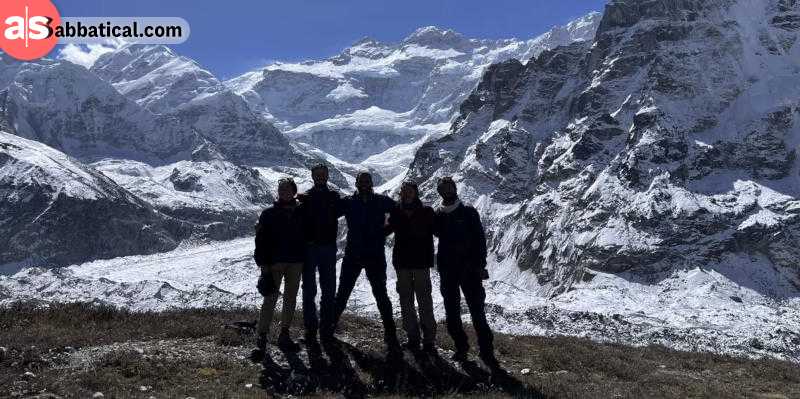
Kanchenjunga Circuit Trek
Intro to Kanchenjunga
The Kanchenjunga circuit trek is the third highest mountain in the world (8,586m). It sits in the far east of Nepal, near the India border. Trekking here is hard but most beautiful. Big forest, snow pass, hidden village. Very few tourists go. The trail is long and takes 20-25 days. But every day is a new surprise. You feel like you are alone in nature.
border. Trekking here is hard but most beautiful. Big forest, snow pass, hidden village. Very few tourists go. The trail is long and takes 20-25 days. But every day is a new surprise. You feel like you are alone in nature.
Trek Route and Plan
The Kanchenjunga circuit has two sides. One is North Base Camp (Pangpema), and the other is South Base Camp (Oktang). Circuit means you do both sides, then connect in the middle.
The trek starts from Taplejung, then goes to Mitlung, Chiruwa, Lelep, and Ghunsa. From Ghunsa, go to Khambachen, Lhonak, and then reach Pangpema (5,143m). After going back to Ghunsa, the trail goes to Sele La Pass, crosses to Tseram, and then reaches Oktang viewpoint. From here, you see the south face of Kanchenjunga.
After that, go down to Yamphuding and Khebang and back to Taplejung or drive.
The whole trek takes about 22 to 25 days.
Highlights
- Standing under Kanchenjunga both side
- Pangpema and Oktang give top views
- Sele La Pass give you 360 sky
- Red panda and snow leopards live here
- Sherpa and Limbu culture, new to many
- Tea house in some place, tents in few
- Deep forest, glacier, waterfall, holy mountain
Permits and Rules
Kanchenjunga is also a restricted area. Need a special permit and a KCAP permit. You must go with a registered guide and two trekkers minimum. The permit cost about $100. Total trek cost around $1300 to $1700 depending on group size, guide, and porter.
When to Go
The best time is October-November (clear view, no rain) and April-May (flower bloom, less snow). Winter is very cold and not safe. June-August is rainy and slippery.
Accommodation and Food
Some parts have tea houses, like Ghunsa, Khambachen, and Yamphuding. Other parts like Lhonak or Sele La need camping. The food is simple but warm. Dal bhat, chowmein, biscuit, egg. Guides and porters help cook on a tent trek. I need to bring a sleeping bag, warm clothes, and medicine.
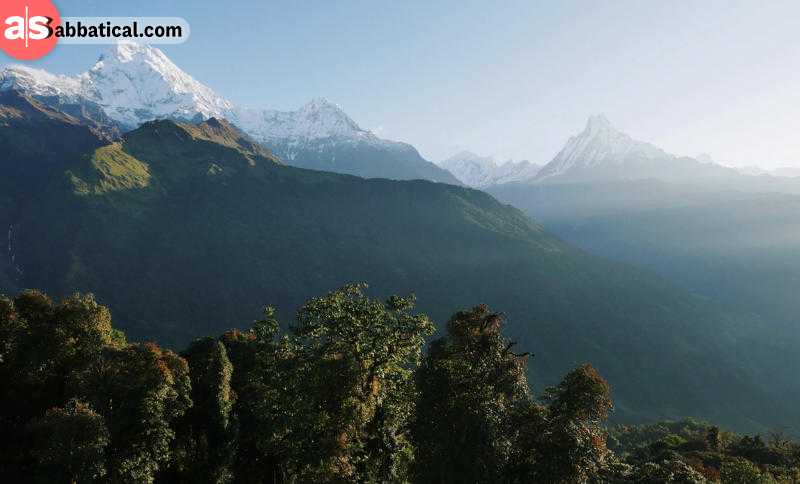
Ghorepani Poon Hill Trek
Intro to Poon Hill Trek
The Ghorepani Poon hill trek is most famous for its view. Anyone can do it, even first-time trekkers. The Ghorepani Poon Hill trek is in the Annapurna area. You walk 3 to 5 days and get a sunrise view from Poon Hill (3,210m). That view is a dream—Annapurna, Dhaulagiri, and Nilgiri in golden light.
Route and Itinerary
The trek starts from Nayapul, a drive from Pokhara. Then go to Tikhedhunga, climb up the steps to Ulleri, and the next day reach Ghorepani. From Ghorepani, early morning hike 1 hour to Poon Hill. After sunrise, back to the hotel, then go to Tadapani or Ghandruk, then back to Pokhara.
The whole trek can be done in 4 to 5 days.
Highlights
- Poon Hill sunrise, most photo taken place
- Rhododendron forest in spring, full red pink
- Gurung and Magar village, cultural walk
- Nice lodge with warm food
- Short trek, good for family or first-timer
- Clear view of 8000m mountain in short time
- Can combine with ABC or longer trek
Cost and Permit
Need TIMS and ACAP permits. The total permit cost about $40. Trek cost is low compared to other treks. For a 5-day trek, it costs around $300 to $500 with a guide, food, and lodge.
When to Go
The best time is from March to May and October to December. Spring gives flowers, and autumn gives a clean sky. Winter is also okay, with snow only on hills. Summer is not the best; clouds block the view.
Food and Stay
The Lodge here is good, with a menu. You can eat rice, noodles, eggs, bread, curry, and pizza. Bed with blanket, clean toilet. Hot showers are mostly available. Wifi and charging are also in some places.
Why Choose These Three Treks?
- Manaslu Trek give raw adventure with high pass, not touristy
- The Kanchenjunga Trek is remote and for real mountain lovers.
- Poon Hill Trek is short but super rewarding.
- Each trek show different face of Nepal—culture, nature, people
- You can choose by time, budget, or experience
All three give something the heart never forgets.
Tips Before You Go
- Always walk slow, drink more water, avoid altitude sickness
- Carry warm clothes; weather changes fast in the mountains.
- Hire local guide and porter; they help and you support local
- Bring cash; there is no ATM in the mountain.
- Respect local people; ask before taking photos.
- Buy travel insurance, include emergency rescue
- Train your body a little before the trek.
Final Words
Trekking in Nepal is more than just walking. You meet yourself in the mountains. Manaslu, Kanchenjunga, and Poon Hill—each one is special. If you want silence and a big mountain, go to Manaslu. If you want remote, raw and real nature, go to Kanchenjunga. If you want something short but amazing, Poon Hill is perfect. Nepal welcomes all people with an open heart. Come once, and you go back full.
Booking Process by The Himalayan Odyssey
To book any of these treks tour through The Himalayan Odyssey Treks Pvt. Ltd. begin by contacting them via email at info@thehimalayanodyssey.com or phone or WhatsApp at +977-9842746298 to discuss your preferred dates, group size, and specific needs. Prior to the trek, you will receive a comprehensive pre-trek briefing with essential information on packing, fitness preparation, and altitude acclimatization. The agency will finalize all logistical arrangements, including transportation, accommodation, and permits, to ensure everything is in place for your trek. Upon arrival in Nepal, the team will ensure that all aspects of the trek are organized, providing you with a smooth and unforgettable experience on these treks.
